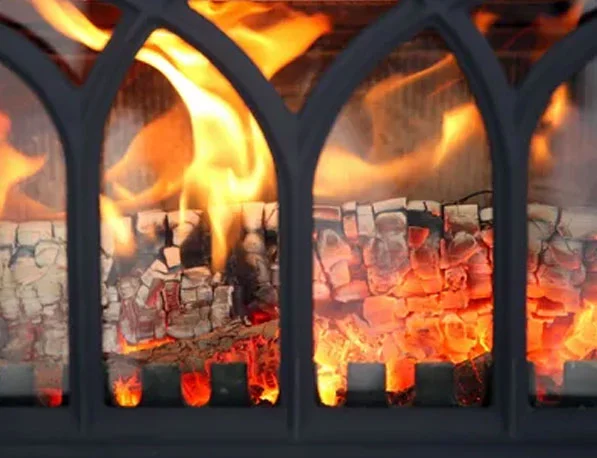
Advice on Good Burning Practice
Wood as Fuel
Wood is an excellent fuel. It is plentiful, and renewable. It is often sourced close to the point of use. At a basic level it requires little processing – just cutting and splitting. It can be used to manufacture other wood based fuels. The use of wood as fuel however is not well understood. Consumers are often unaware of how to get the best from their wood fires / stoves. Most people think they know how to burn a few logs but there are several important factors which are often overlooked and this causes problems.
The problem in stoves / woodburner
The basic problem is that the wood is often not burned in an efficient way. That is to say it is not burned hot enough. Most of what is burning when using wood logs are “volatile hydrocarbons”. These are things like tars, creosote and resins etc. They constitute about 70 – 80% of the available heat energy in any log. When we see flames coming from wood, it’s the volatile gasses that are burning. Most of the rest of the available energy is fixed carbon (charcoal) at around 15 – 18 %. When we see wood and embers glowing, it is the charcoal that is burning. If the stove is not hot enough it’s the volatile tars etc. that cause a problem. These volatiles must first be turned in to a gas (vapourised) before they can burn. If the fire is not hot enough the volatile vapours are still given off but they are not completely burned in the appliance and they escape to the chimney. If the chimney is cool enough, some of these tars will condense and solidify on to the inside of the chimney in the same way that water vapour condenses on to a cool bathroom mirror. In a cool chimney they can immediately solidify to form the tarry deposits or creosote glaze. Of course, not all the tarry vapours solidify inside the chimney. A great deal is emitted from the top as un-burnt hydrocarbon or smoke. Smoke is simply unburned fuel. This is a serious air pollutant. Much of the available fuel which could have been turned into heat has also been lost. Incomplete or low temperature burning of wood is bad for your chimney, bad for air quality and bad for your wallet.
How do you know if wood is burning efficiently?
There are four basic factors which govern efficient combustion of wood. These factors directly affect the temperature inside the stove, which in turn governs efficiency / pollution etc.
- User operation / control of the stove – this is usually the most important but mostmisunderstood factor.
- The moisture content of the wood
- The efficiency of the stove
- The efficiency / construction of the chimney
The size of the stove is also important. If the kW (heat) output is too much for the room then this will be an additional problem. Low temperature burning is likely as the room soon gets too hot and the operator closes the air controls off too much.



